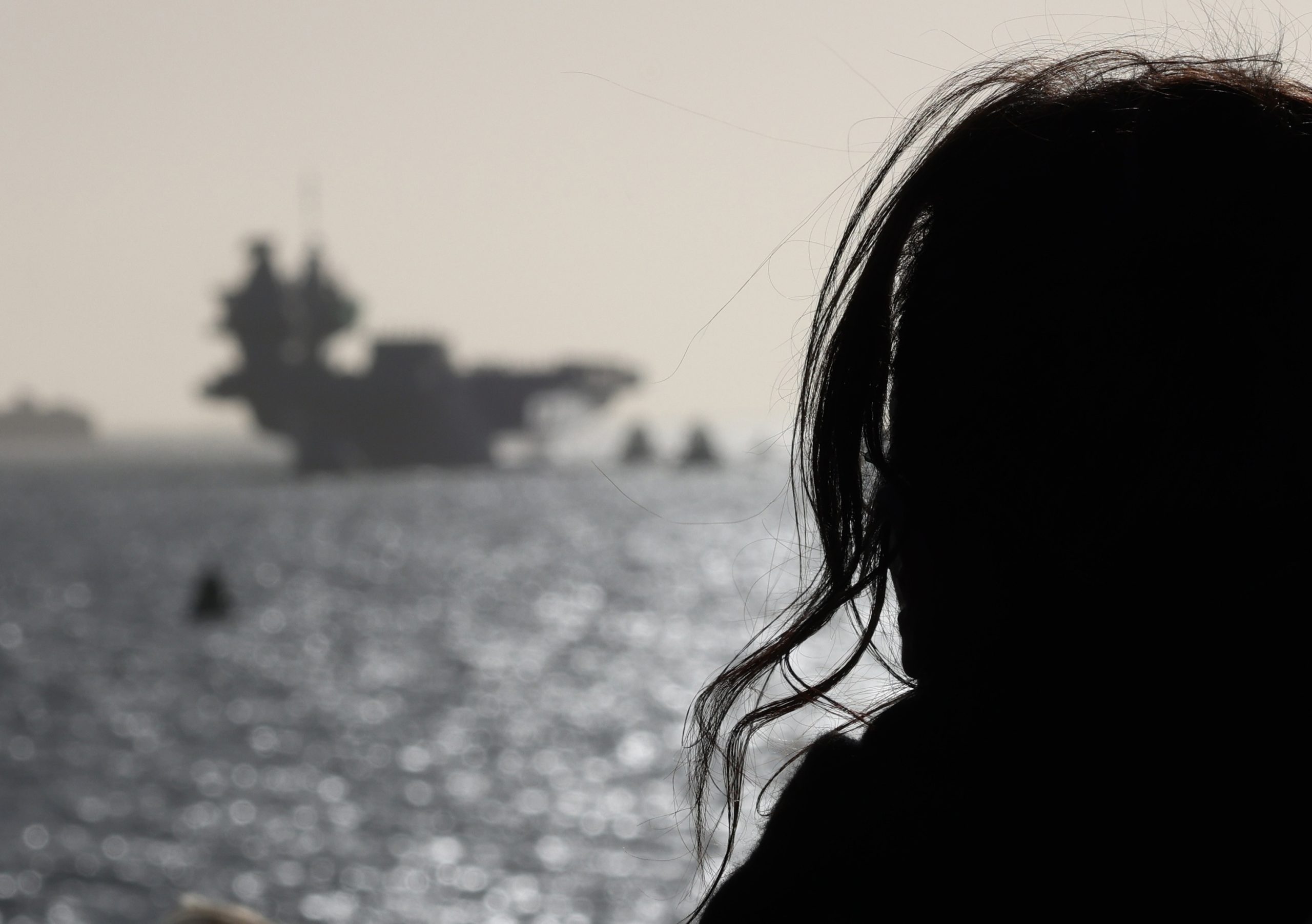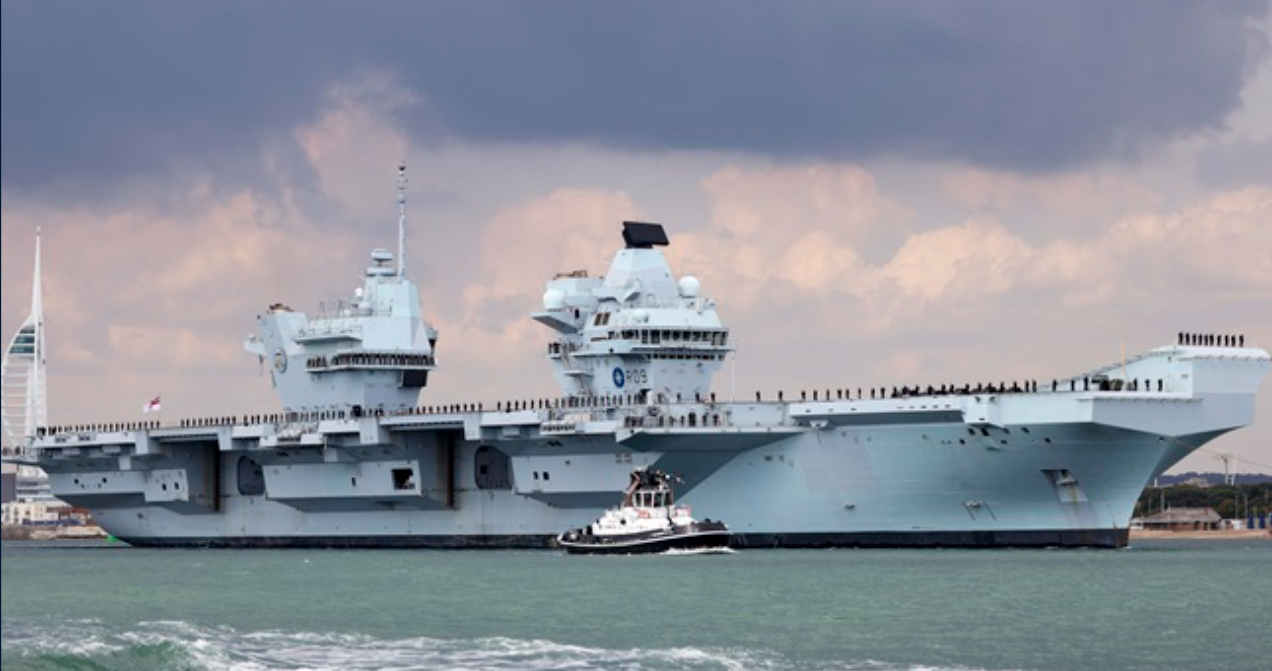
The Royal Navy aircraft carrier HMS Prince of Wales (R09) returned home to Portsmouth on Monday, wrapping up the three-month WESTLANT 23 deployment to the United States, which saw the carrier conduct numerous trials in the waters off the U.S East Coast. The trials were geared towards expanding the operational capabilities of the Royal Navy’s two Queen Elizabeth–class carriers. In a social media post, the carrier stated it had carried out 1,138 deck landings by 13 aircraft types and 60 shipborne rolling vertical landings (SRVLs) since Sept.1.
Next stop aviation…… Since 1 Sep we have completed:
1138 Deck Landings
13 Aircraft types
60 SRVL
That’s 3.4miles of runway used!Unrelated to aviation but because you asked:
6220kg Bacon
118776 rashers or an elephant’s worthWhich all together means 415,000 meals pic.twitter.com/UXE7GVe6kn
— HMS Prince of Wales (@HMSPWLS) December 4, 2023
The three-month deployment was the longest undertaken by the carrier, which departed Portsmouth on Sept.1, and on Sept.8 conducted a successful trial off the coast of Cornwall with a W Autonomous Systems (WAS) unmanned air vehicle (UAV) marking the first time a pilotless plane has flown on and off a Royal Navy aircraft carrier, according to a release. The WAS UAV was part of various trials with the end goal of having UAVs deployed with the UK carrier strike group (CSG) to carry out various tasks. These include transfer of stores and supplies between ships and also from shore to ship with the WAS UAV capable of carrying a payload of 220 lbs. up to 621 miles. The WAS UAV trial covered the logistical and support aspect of UAVs operating with the UK CSG ,while a trial during its U.S deployment with the Mojave UAV covered the use of UAVs by the UK CSG for long-range surveillance and strike missions.
The carrier arrived at Naval Station Mayport in Florida on Sept. 20 to load on equipment, supplies and stores before heading to Naval Station Norfolk, Virginia, which served as its homeport while it conducted F-35B trials. During the voyage to Norfolk, the carrier conducted deck landings and take-offs of Coast Guard MH-65E Dolphin helicopters and Marine Corps MV-22B Ospreys and CH-53E Super Stallions, UH-1Y Super Hueys and AH-1Z Vipers helicopters.
The monthlong F-35B trials used two specially instrumented F-35Bs with three Marine Corps test pilots and a 180-strong support team from Naval Air Station Patuxent River, F-35 Integrated Test Force (PAX ITF), which is responsible for testing all sea-going F-35 variants and is comprised of personnel from the U.S Navy and Marine Corps, Royal Air Force, Lockheed Martin, British Aerospace, Northrop Grumman and U.S. government civilians. Along with launches and recovery in heavy sea states in the day and night, the trials included launching the aircraft with a maximum payload, SVRLs and backwards landing (in which the aircraft lands facing the stern) to generate data for analysis to determine the maximum capabilities and safety margins for F-35B operations conducted off Royal Navy carriers.

A Japan Maritime Self-Defense Force (JMSDF) delegation led by Capt. Tsuyoshi Sato, Izumo-class special modification program lead, and five other JMSDF and Japan Air Self Defense Force (JASDF) officers embarked on board Prince of Wales for two weeks to observe the trials. The JMSDF is expected to conduct similar trials next year off the East Coast using one of their two Izumo class carriers. “The growing synergy among F-35 operators is boosting allied deterrence in the Indo-Pacific, where Japan is acquiring more F-35s than any other international customer – a mixed fleet of 147 F-35As and F-35Bs” stated a Lockheed Martin release. During the F-35B trials, 24th Marine Expeditionary Unit (MEU) Osprey and Sea Stallion crews conducted day/night operating at sea landing qualifications on the carrier.
On Nov. 17, in the waters off Virginia, Prince of Wales launched and recovered the General Atomics short take-off and landing (STOL) Mojave UAV. The Mojave UAV is an evolution of General Atomics’ MQ-9 Reaper and MQ-1C Gray Eagle UAVs and has a greater payload capacity than its predecessors, allowing it to carry up to 3,600 lb., which totals as many as 16 AGM-114 Hellfire or equivalent missiles according to General Atomics.
The trial further unlocks the potential of the Queen Elizabeth-class aircraft carriers, demonstrating how modern uncrewed air systems can operate alongside fifth-generation crewed aircraft like the Lightnings, stated a Royal Navy release. “The success of this trial heralds a new dawn in how we conduct maritime aviation and is another exciting step in the evolution of the Royal Navy’s carrier strike group into a mixed crewed and uncrewed fighting force” said Rear Admiral James Parkin, Royal Navy Director Develop, whose team planned the trial.
In release on the return of Prince of Wales said the carrier will now undergo maintenance in its homeport over the coming weeks before resuming trials, training and exercises gearing up for her maiden deployment leading a CSG in 2025. The CSG’s 2025 deployment in 2025 will be to the Indo-Pacific.
On Friday, the U.K. activated its second front line F-35B squadron, 809 “Phoenix” Naval Air Squadron (NAS) to join the current sole front line squadron, 617 “ Dambusters” Royal Air Force. In 1978, 809 NAS was disbanded, but it was reformed for the Falklands War in 1982 to fly Sea Harrier fighters before being deactivated in December 1982. Like 617 Sqn, 809 NAS will be a mix of Royal Navy and Royal Air Force service members, with the commanding officer alternating from the two services. The UK has a total of four F-35B squadrons; the other two are 207 Sqn (Operational Conversion Unit) and 17 Test and Evaluation Sqn, which also comprises a mix of Royal Navy and Royal Air Force service members.





